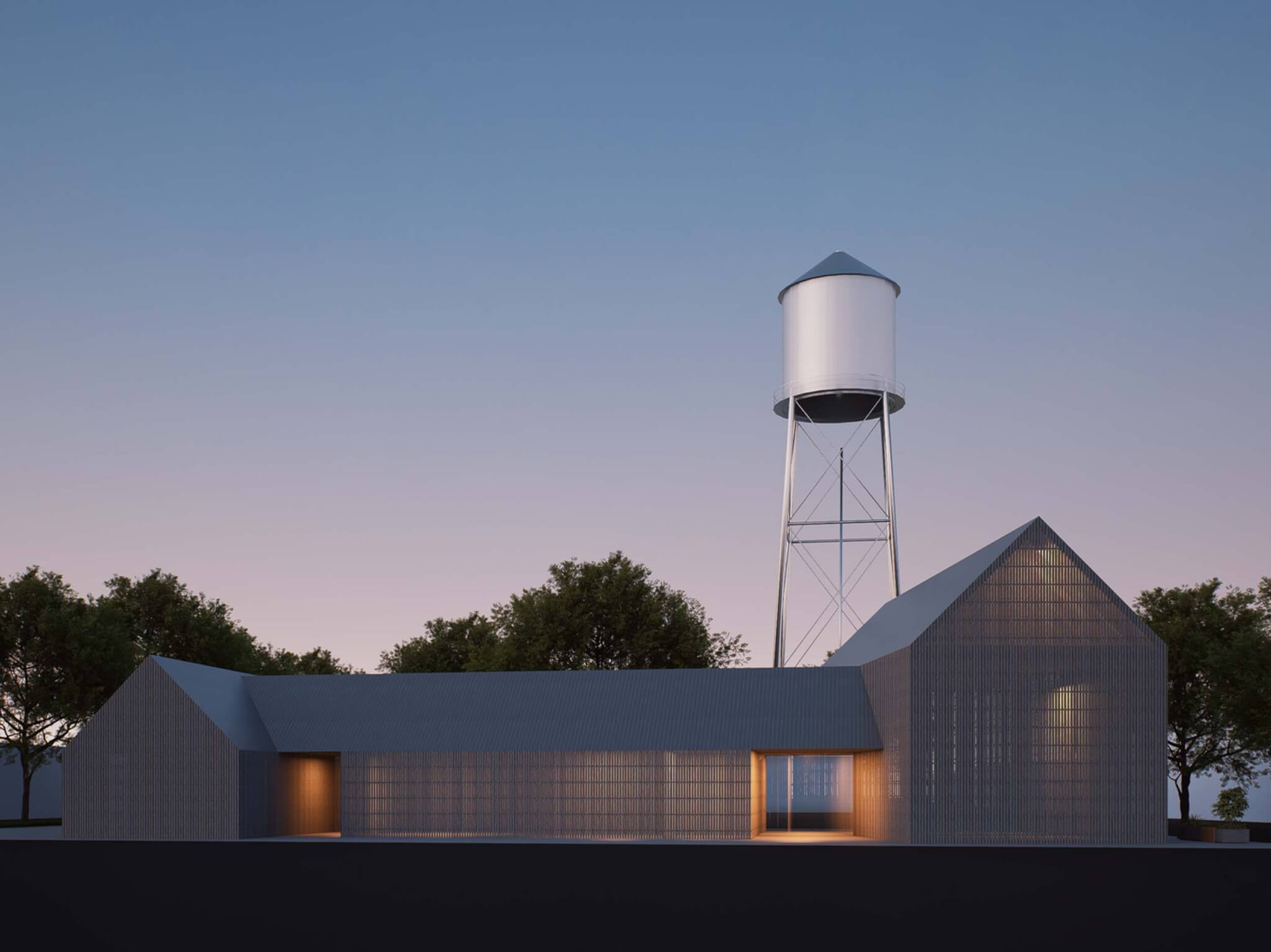Aurora, Oregon—a rural community in the Willamette Valley—has approved a new city hall building, designed by New York–based No Architecture. The proposed structure consists of four volumes surrounding a central courtyard, each adopting the silhouette of a traditional American barn.

Inspired by the programmatic flexibility of the barn as a vernacular typology, the architects imagine the new city hall as more than just a place of governance but also as “a beacon for community gathering.” The building’s central courtyard will serve as a social space while the interior will feature a council room, community rooms, and Aurora’s first public library.
Aurora was originally founded as a utopian Christian community in the mid-19th century. The new city hall references the community’s extant colonial architecture, as well as the traditions of the Willamette Valley at large. In particular, the massing resembles Aurora Mills, an 1890s grain mill that has been repurposed as an antique store and architectural salvage.
No Architecture’s new design also looks toward the future. Through the use of a carbon sequestering mass timber post and beam structure the architects aim for the building to be carbon neutral. In addition, a circulation path, that wraps the exterior footprint of the structure will provide passive heating and cooling.
 At night, light will seep through the building’s wood slat facade. (Courtesy No Architecture)
At night, light will seep through the building’s wood slat facade. (Courtesy No Architecture)
The building will be clad in a transparent screen of wood slats and a roof of corrugated metal. As seen in renderings, at night light seeps through the slatted facade, creating the impression of immateriality.
In a press release, No Architecture added “The clustered barn design also provides a model for the future of small towns across the United States, demonstrating how architecture can embody local traditions and identities while integrating urban life and ecological sustainability.”
No Architecture previously worked on a wine hotel also in the Willamette Valley, a popular wine destination.

